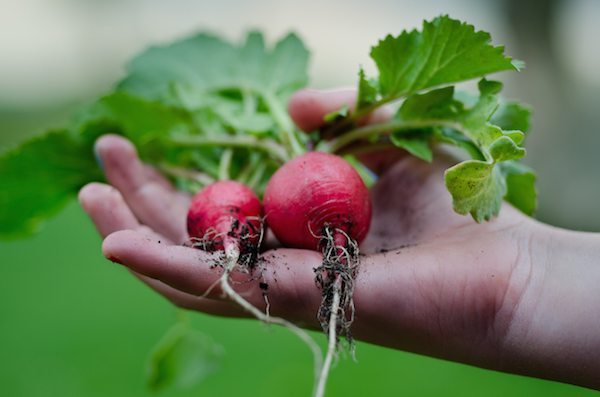My two driving passions are youth development and access to fresh food.
So the idea of incorporating gardening into youth programs gets me very fired up. There are a lot of great garden resources out there including this previous Breakfast Club Blog: Garden-Based Learning. Truth be told I could chat about gardening plans and show you pictures of my little urban garden all day. But first we should talk about how gardening fits in to your bigger, grander program plan. Because gardening fits into every program plan.
A garden is the ideal spot to grow your program, regardless of the ages you serve, regardless of your focus, regardless of the amount of space you have. I believe every youth program can and should have a garden. Maybe it will just be some pots of lettuce grown on a shady balcony, an old kiddie pool transformed into a butterfly garden, or maybe it will be a grand space that engages the whole community. Either way, a garden will make your program stronger.
Let’s dig in to this idea a bit, shall we? (Sorry no more garden puns, I promise.)
Here are my top tips on how to connect your garden and other program components.
Art and Gardening – Admit it, gardens are beautiful! Why not use them as a point of inspiration?
Tip 1: Decorate your garden with hand crafted crop markers, pinwheels and sculptures.
Tip 2: Use produce scraps and seconds to create natural tie-dye.
Tip 3: Pick a medium, (sketching, watercolors, digital photography, etc.) and then create images of the garden during different seasons.
Tip 4: Let kids re-decorate old pots (ask for donations from your neighborhood home improvement store) and then take a small part of the garden home. Better yet, take the finished pots filled with flowers to a local nursing home.

Basic Skills and Gardening – For some of our kids reading and/or math are brutally hard and the thought of enrichment can and does result in frustration. Gardening can provide a peaceful space to subtly work on these skills.
Tip 1: Ask students to read seed package instructions out loud.
Tip 2: Have rules and tape measures on hand so students can properly space plants for maximum harvest
Tip 3: Install a rain gauge and have students track the water changes over time.
Tip 4: Have a garden-based spelling bee or poetry contest. Host it in your garden and serve your harvest as snacks.
Tip 5: Add a writing corner/ bench/table in the garden and encourage kids to take a break and reflect on their gardening experience in a journal.
Character Development and Gardening – Successful gardens require many of the same soft skills that kids need to be successful in school and work.
Tip 1: Create a garden chore chart and ensure that every kid experiences all the tasks.
Tip 2: Establish group agreements/garden rules as a team and post them so everyone can enjoy the garden.
Tip 3: ALWAYS clean your garden tools after each use and store them appropriately.
Tip 4: Allow for some quite time in the garden every week and teach kids ways to meditate, reflect and recharge internally.
Nutrition and Gardening – Ok, so these seems like a no-brainer. Let’s be honest, what is the use of having fresh food if kids don’t eat it?
Tip 1: Instead of asking if kids like the taste of vegetables, ask them to describe the taste. Is it crunchy, bitter, sour, squishy or snappy? Would it taste better with a dash of salt, a pinch of pepper or maybe a tiny squirt of honey?
Tip 2: Pair fruits and veggies together (spinach and strawberry salad, oranges and roasted beets) to increase appeal and expand the healthiness of the dish.
Tip 3: Try it with them. Yep, if you want kids to try a bite of watermelon radish, you need to try it too. (Oh and watermelon radishes are soooo good, by the way!)
Tip 4: Conduct a taste test of different varieties of the same fruit or veggie. Let kids rank the items. Keep track of the kids’ favorites too and you will have an easier time selecting varieties for next year.

STEM and Gardening – Another no brainer, perhaps. Yet, a lot of STEM activities fail to include agriculture. Whether you want to explore biology by watching a seed transform into a plant or you want to use technology to create a crop rotation plan, a garden can be your own personal STEM lab.
Tip 1: Include your garden plans into STEM funding requests.
Tip 2: Engage food scientists, farmers and processors as volunteers and speakers. (I still hear from students about the time that a tomato processor explained how spaghetti sauce was made)
Tip 3: Have students explore the impact of droughts, climate change, temperature fluctuation on harvests.
Tip 4: Let students design and build unique raised beds to maximize space and/or improve growing conditions.
For breakfast this morning I had a banana, peanut butter toast and lavender tea.
Author: Elizabeth Crist Darby
